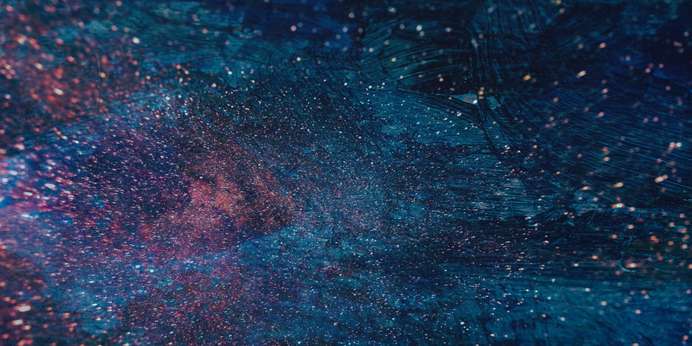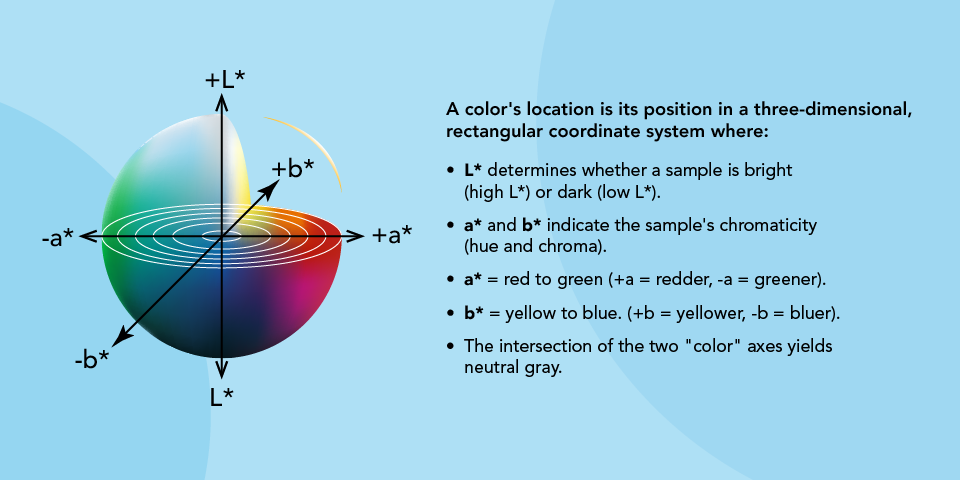
The human eye can see millions of colors. However, it won’t always distinguish colors from one another accurately. You may perceive two slightly different colors as the same or see differences in objects of identical color depending on your viewing angle and lighting. This creates challenges when communicating about color. This inability to precisely identify and communicate color can be troublesome for designers or manufacturers when seeking to replicate color standards and establish color discrepancies.
To reproduce an exact desired color every time, manufacturers and designers need ways to quantify a color's properties and determine the numerical difference between colors. CIELAB or CIE L*a*b* is a device-independent, 3D color space for precisely measuring and comparing all perceptible colors utilizing three color values. In this color space, numerical disparities between values represent the degree of color change humans can perceive.
CIELAB's core design and operational assumption are founded on scientific theory, which shows that the brain interprets retinal color inputs as differences between light and dark (lightness) and between mutually exclusive zones of opposing colors: red/green and blue/yellow. We call this the "principle of color opposition correlation" since color cannot be red and green, or yellow and blue. Have you ever seen a greenish-red?
What Is CIELAB Color Model?
The L,a,b color space was originally defined in 1948 by Richard S. Hunter, the founder of HunterLab. It was designed to be computed via simple formulas from the CIE 1931 XYZ color space, but to be more perceptually uniform. Hunter named his coordinates L, a, b, and this was the precursor to CIELAB, created in 1976 by the International Commission on Illumination (CIE). The CIE in CIELAB is the abbreviation for the International Commission on Illumination's French name, Commission Internationale de l'Eclairage which named the coordinates for CIELAB as L*, a*, b* to distinguish them from Hunter's coordinates.
Hunter L, a, b and CIE 1976 L*a*b* (CIELAB) are both color scales based on the Opponent-Color Theory which assumes that the receptors in the human eye perceive color as the following pairs of opposite:
- L scale: Light vs. dark where a low number (0-50) indicates dark, and a high number (51-100) indicates light.
- a scale: Red vs. green where a positive number indicates red, and a negative number indicates green.
- b scale: Yellow vs. blue where a positive number indicates yellow, and a negative number indicates blue
The perfect color scale would be uniform throughout color space, meaning that a difference of one unit between two colors would appear to be visually different by the same amount whether red, purple, orange, or blue. In truth, neither Hunter L, a, b nor CIELAB is perfectly uniform. Both the Hunter L, a, b and CIE L*,a*,b* scales are mathematically derived from CIE XYZ values, however, Hunter L,a,b uses a square root function which contracts in the yellow region of color space and expands in the blue region, while CIE L*,a*,b* uses a cube root function and is over expanded in the yellow region.
In general, the Hunter L,a,b and CIELAB (L*,a*,b*) color scales are perfectly acceptable and descriptive for color measurement and to define color tolerance standards, though The CIELAB scale generally gives better approximation to visual evaluation of color difference for very dark colors. Both of these scales are intuitive, and their use with practice can easily lead to understanding and communication of color values.



